The best budget hiking boots: quality pairs at low prices
We get to grips with the best budget hiking boots around so that you don’t have to splash out to find good performance footwear for the backcountry
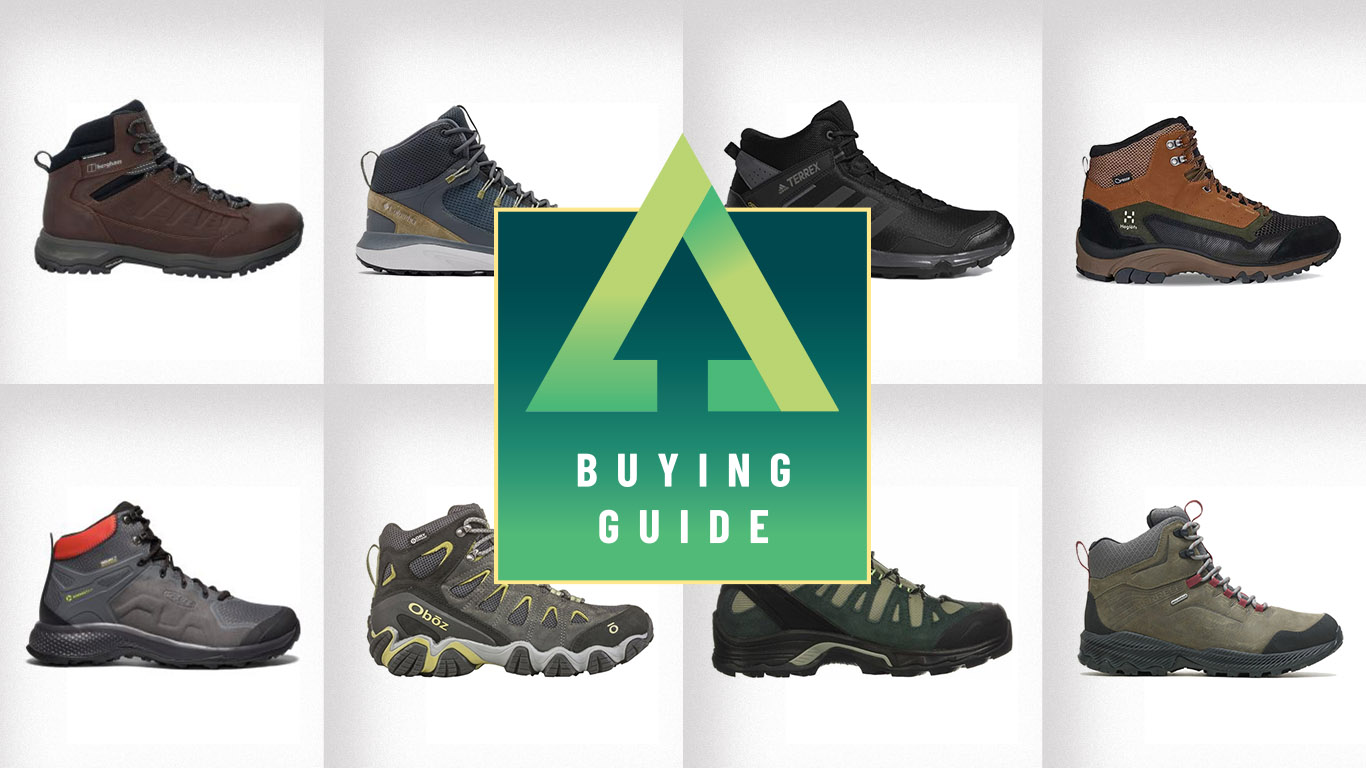
The best budget hiking boots provide a more affordable alternative to the very best hiking boots around in 2025. There's no getting away from the fact that decent hiking footwear is expensive. This is down to the quality of components and materials required to create a robust shoe or boot that's capable of taking on the backcountry.
Due to this, the even the best budget hiking boots are more expensive than a good pair of trainers. However, they arguably represent better value than the premium hiking footwear in our best hiking boots guide, making them ideal for beginners to the trails.
Our expert testers took to the backcountry on mountain hikes and coastal walks to test these great value pairs. In terms of performance, we found them to provide solid grip on a variety of terrain types, plenty of ankle support and good protection from the weather and trail elements. Most feature a breathable waterproof membrane to let moisture out but keep rainwater out.
Our current favorite is the Haglöfs' Skuta Mid Eco Proof for its long-lasting comfort. We'd advise women to check out our separate guide to the best cheap hiking boots for women, which contains pairs specifically designed for the female foot.
The quick list
Here's our Quick List, showing a brief overview of the boots in our selection. For a more detailed look at these great value boots, navigate further down this guide.
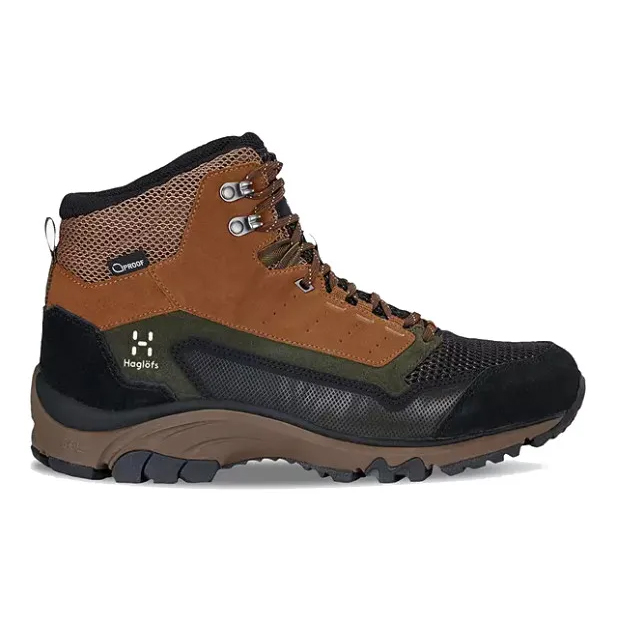
We love this lightweight, high-performing, mid-height hiking boot with a small footprint that's waterproof and supremely comfortable
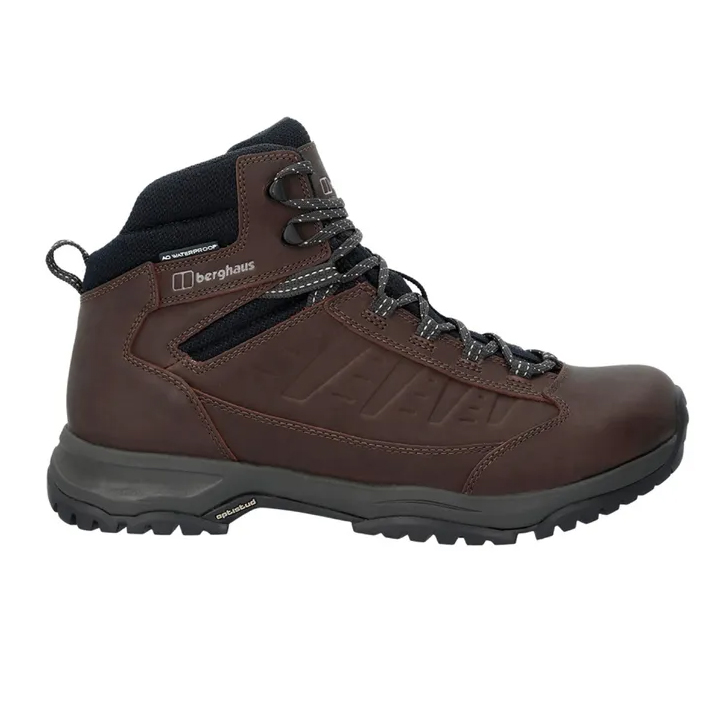
A tried-and-tested stalwart from a much-loved British brand, with a very reasonable price tag for what we assert is a quality all-leather boot
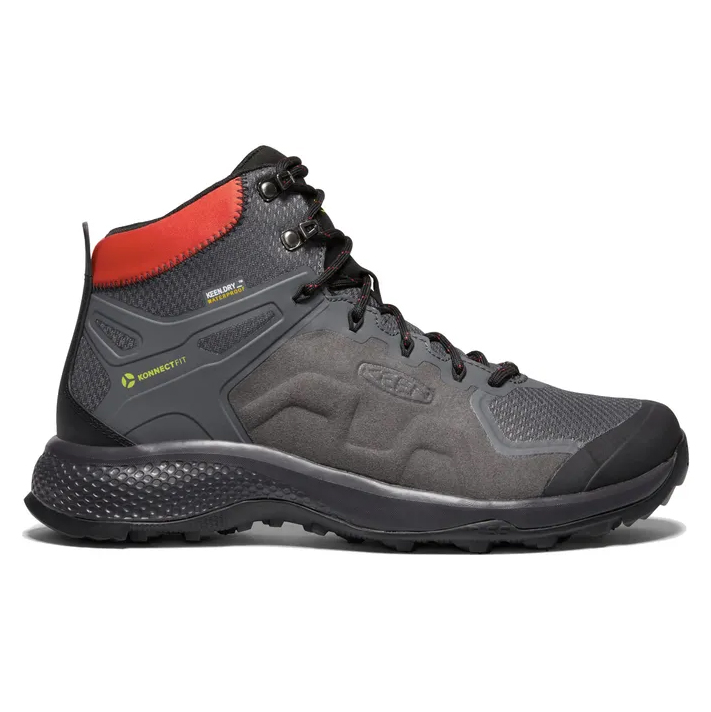
A hybrid ‘trainer-hiker’ boot that we found combines a lightweight trail feel with a more reassuringly boot-like build for added protection and durability
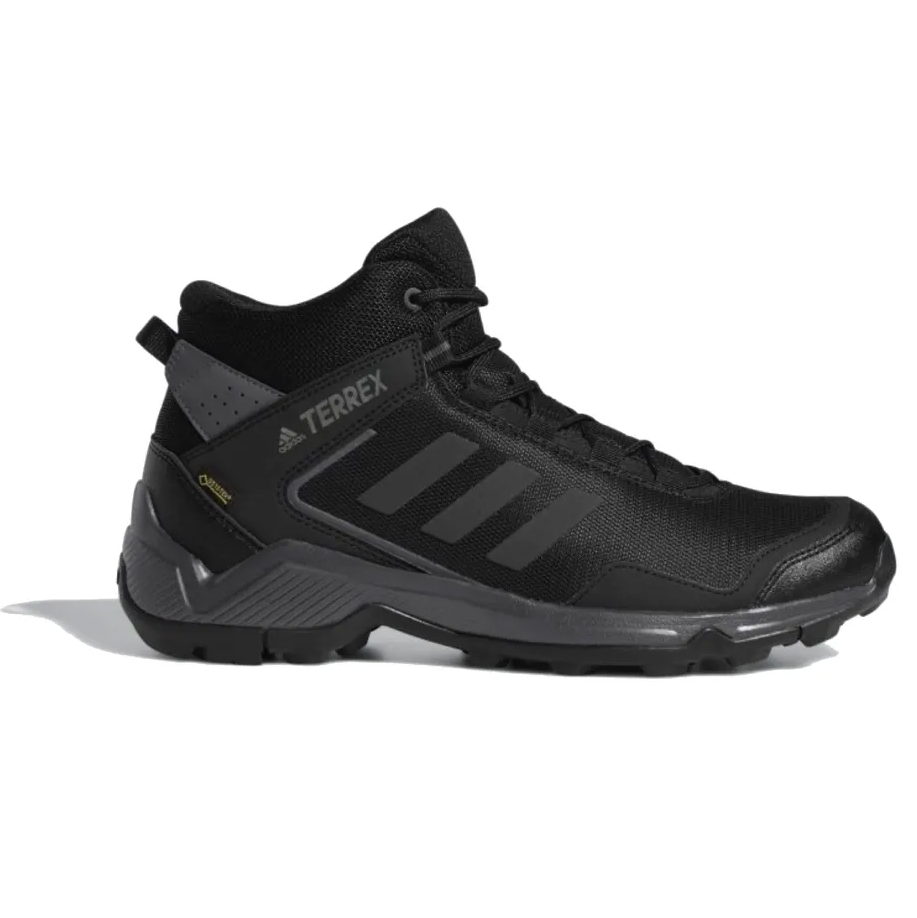
A mid-cut fabric hiker that blends running shoe cushioning with clean, contemporary looks to create a modern lightweight boot that we think is well-suited to fast-paced walks on mixed terrain
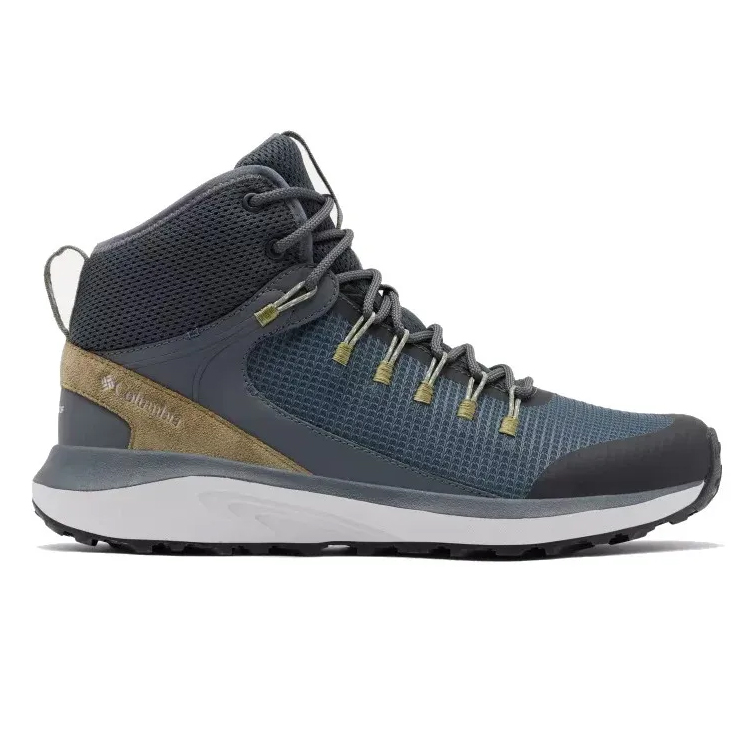
Boasting trainer-like comfort, contemporary styling and extremely low weight, we approve of these fabric boots – an attractive option for fast-paced trail hiking

A robust and protective hiking boot that we found performs well over rough terrain, with a durable build and a structured, supportive feel underfoot
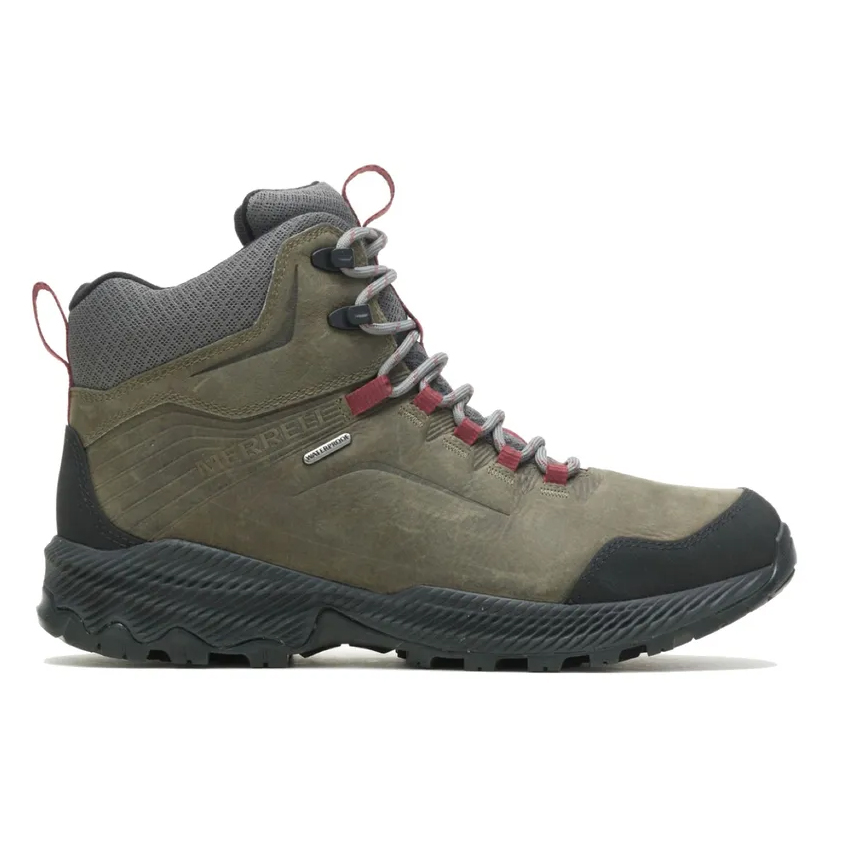
We approve of this well-priced leather boot that feels robust and protective, while also providing good cushioning and all-round comfort

The protective and comfortable KEEN Circadia Waterproof Boot mid boot has an accommodating fit, which we believe makes it a great choice as an everyday hiker
The best budget hiking boots 2025
You can trust Advnture
The best budget hiking boots overall
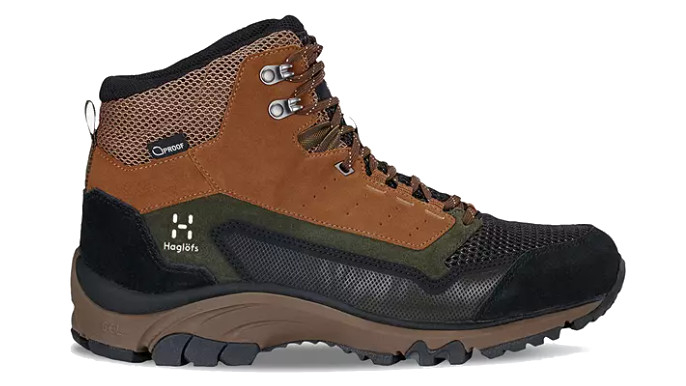
Specifications
Reasons to buy
Reasons to avoid
This handsome boot offers instant comfort as soon as you get it out of the box and stick your hoof in it. On test, we found the leather upper to be soft and supple, while the moulded EVA midsole supplied good cushioning (complemented by the use of a gel insert in the heel). Unless you’re extremely prone to hotspots and blisters, there is no real need to wear these boots in before hitting the hills.
The open mesh design didn't fill us with confidence about their waterproofing credentials, but on test the Skutas stood up pretty well to being immersed in water during stream crossings and on coastal tracks. With a reinforced rand and a toe cap, the Skutas provide more toe protection than they first appear to. Robust without being overly chunky, they can be worn with hiking shorts or the best hiking pants, and our expert tester went as far to say that they "look good with a pair of jeans for kicking back with a beer afterwards as well".
The Proof Eco membrane is entirely fluorocarbon-free and the premium leather in the upper is sourced from a tannery audited by the Leather Working Group, which endeavors to ensure ethical practices and supply chains are used in the production process of leather goods.
Read our full Haglöfs Skuta Mid Proof Eco review
The best budget hiking boots for everyday hiking
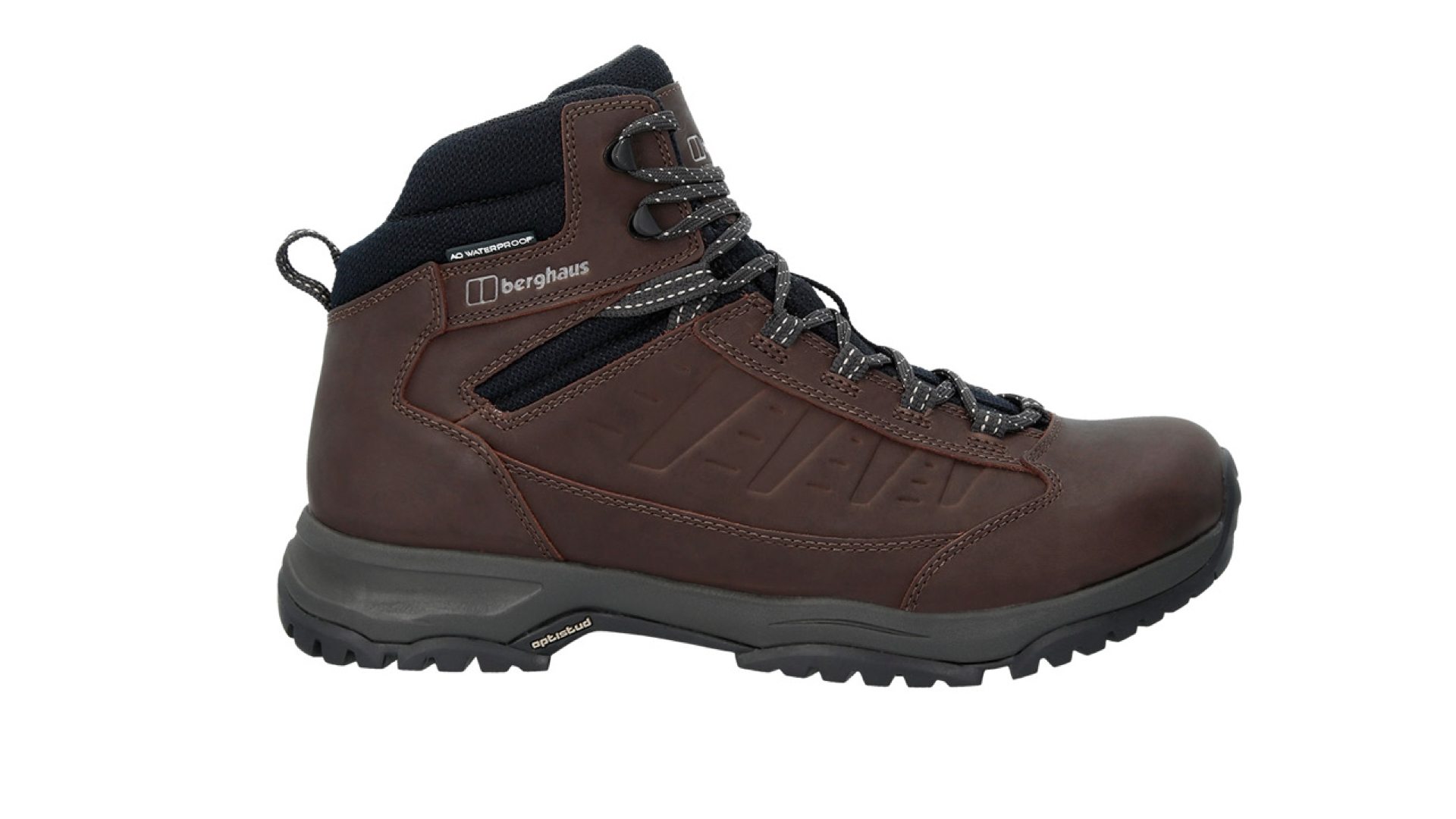
Specifications
Reasons to buy
Reasons to avoid
The Berghaus Expeditor Ridge 2.0 is a mid-cut hiker that offers "a good balance of immediate, out-of-the-box comfort and longer-term durability" according to our expert reviewer. This is thanks to a construction that combines quality leather uppers with a waterproof liner, plus plenty of ankle padding and generous underfoot cushioning. Unsurprisingly, given their affordable price tag, most of the technology here has been developed in-house by Berghaus. But, on test, the AQ membrane proved reliably waterproof, while the Opti-Stud lug pattern underfoot gave reasonable traction on all but the most treacherous surfaces.
They’re reasonably lightweight for leather boots. They’re generally well-built too, with solid stitching, though the finish perhaps isn’t the neatest we’ve seen, with traces of adhesive around the soles and uppers. The EVA midsole prioritizes cushioning over stiffness, which means these boots are more at home on well-trodden paths than technical terrain.
All in all, it’s tough to criticize these boots given their low price point. They outperform most other options at the entry-level end of the market and are likely to last far longer than rival fabric boots.
Read our full Berghaus Expeditor Ridge 2.0 hiking boots review
The best budget hiking boots for lightweight protection
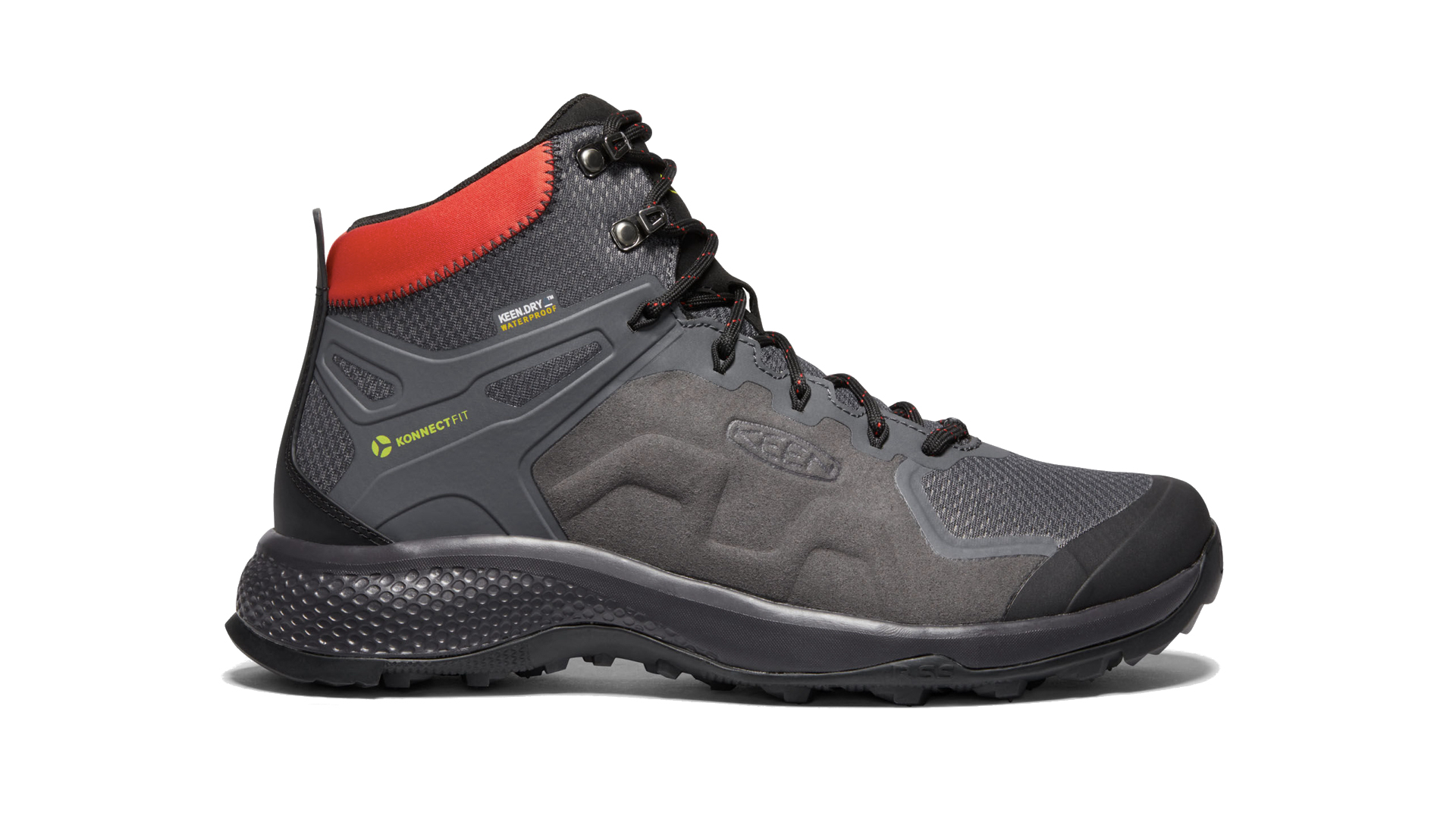
Specifications
Reasons to buy
Reasons to avoid
Described as a hybrid ‘trainer-hiker’, the KEEN Explore boots are designed to be lightweight, agile and versatile. With their chunky heel and mesh vamp, they certainly share some of the traits of cushioned running shoes, while utilising modern synthetic materials to add performance and durability on the trail.
As such, they feel light and bouncy, though still undoubtedly more like a boot than a trainer. This has the benefit of creating an "overall sensation of all-round protectiveness, stability and durability" according to our expert reviewer. However, it inevitably sacrifices a little of the flexibility and responsiveness underfoot that you get from a conventional trail shoe or regular trainer.
It’s worth bearing in mind they’re not designed to take on technical terrain, and as such they wouldn’t be our recommended pick for rock-hopping or scrambling. The waterproofing also did its job – at least, they didn’t leak on test. Overall, we liked the KEEN Explore boots. They feel sturdier and more boot-like than most trainer-inspired mid-cut hikers, while remaining lightweight.
Read our full KEEN Explore Mid Waterproof Hiking Boots review
The best budget hiking boots for out-the-box comfort
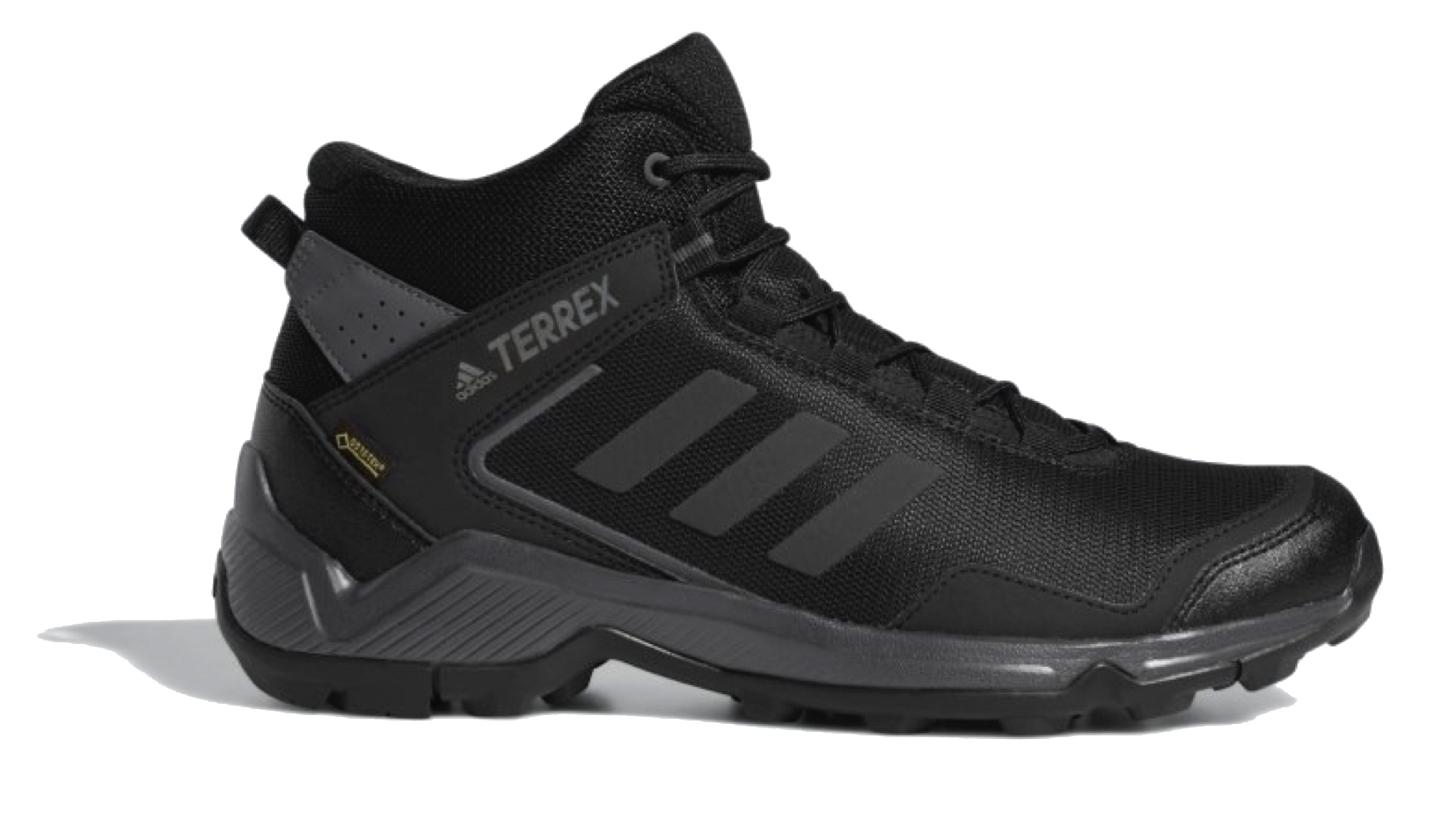
Specifications
Reasons to buy
Reasons to avoid
The Eastrail Mid GTX is part of Adidas’s TERREX line-up, the outdoor-focused arm of the German sportswear giant’s vast product range. The synthetic uppers consist of mesh and PU panels, backed with a Gore-Tex liner for reliable waterproof breathability. On test, we found they were also very comfortable, with a well-padded tongue and ankle cuff, and a roomy toe box.
"I also loved their lightweight, nimble feel on the trail" says our expert tester. Weight-wise, they’re comparable to the lightest ‘trainer-hikers’ in this round-up, but were actually our favorite of all those that we tested – offering a little more structure than Columbia’s Trailstorm Mid, while feeling less cumbersome than KEEN’s chunkier Explore boot.
We did find the outsole occasionally clogged a little on particularly sticky, muddy paths but, that aside, our only other niggle was with the lacing system. We struggled a little to dial in a really tight fit, since it seems tricky to pull the boot closely into the foot, which led to heel slippage. All in all, this was still one of the best affordable hiking boots, giving us confidence on the trail, while also keeping our feet dry, all day long. It seems reasonably durable for a fabric hiker too.
Read our full Adidas TERREX Eastrail Mid GTX hiking boots review
The best budget hiking boots for speed hiking
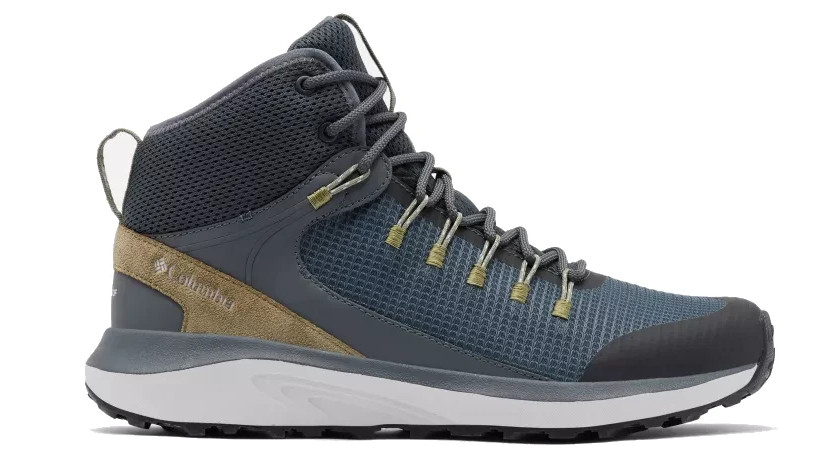
Specifications
Reasons to buy
Reasons to avoid
Columbia's Trailstorm Mid is a very attractive casual hiker with funky fresh, eye-catching styling. Described as a ‘multi-sport shoe’ for roaming from ‘town to forest’, the emphasis is squarely on day hikes rather than technical terrain. As such, we’d expect a lightweight, trainer-like feel with instant comfort and responsive cushioning. They deliver in all these respects, but unlike most trainers, you also get Columbia’s own Omni-Tech waterproof-breathable liner and a seam-sealed bootie construction to guarantee your feet stay dry in the great outdoors.
"I wasn’t so impressed with the Adapt Trax outsole" reported our expert tester. While it outgrips most trainers, the 4mm lugs aren’t that deep, which limits traction on slippery ground, and while the rocker sole delivers decent contact grip, the lack of a heel breast is a disadvantage on steeper descents.
Nevertheless, for quick hiking on groomed trails they are brilliant. That’s largely because they are super-light, with fabric uppers that are as immediately comfortable as your favorite trainers. Essentially, if you’re accustomed to hiking in trail shoes but want a little more waterproof protection and ankle support, without too much added weight, these mid boots are a great pick.
Read our full Columbia Trailstorm Mid hiking boots review
The best budget hiking boots for rugged stability
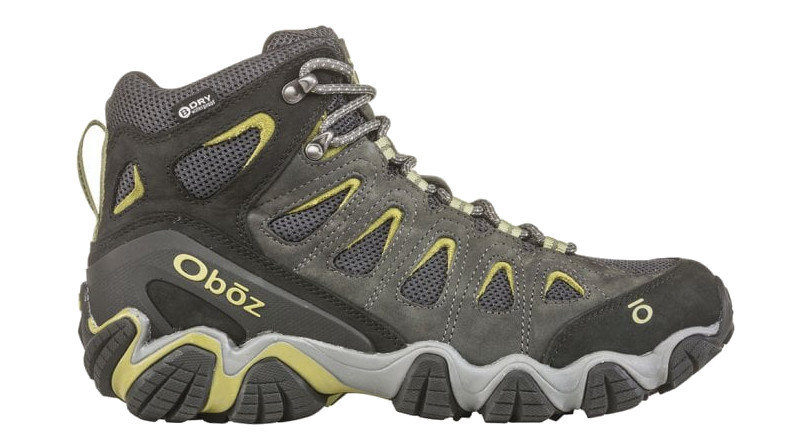
Specifications
Reasons to buy
Reasons to avoid
"If you spend a lot of time tackling rough and rocky trails, you’ll likely love the rugged stability of the Oboz Sawtooth II Mid" says our expert reviewer. They’re regarded as some of the best cheap hiking boots among US hikers and backpackers, and having tested them to the max, we can see why. The extended height of the ankle cuff offers more protection than most mid-cut boots, and though they’re not as nimble as the lightest trainer-hikers, they’re sturdy and comfortable.
Underfoot, a tread pattern of the brand’s own devising provides decent traction. Obviously, you don’t get the contact grip of a dedicated approach shoe nor the all-terrain bite of a fell-running shoe, but as an all-round hiker, these perform well.
Their other stand-out feature is how planted and sturdy they feel. The downside, of course, is that you lose a little responsiveness and flexibility compared to a lighter and less-structured boot. The Sawtooth has garnered an enviable reputation Stateside, which seems fully deserved. Though the chunky styling might be divisive, there’s no faulting the protection and support it offers for hiking and backpacking.
Read our full Oboz Sawtooth II Mid Waterproof hiking boots review
The best full-grain leather budget hiking boots
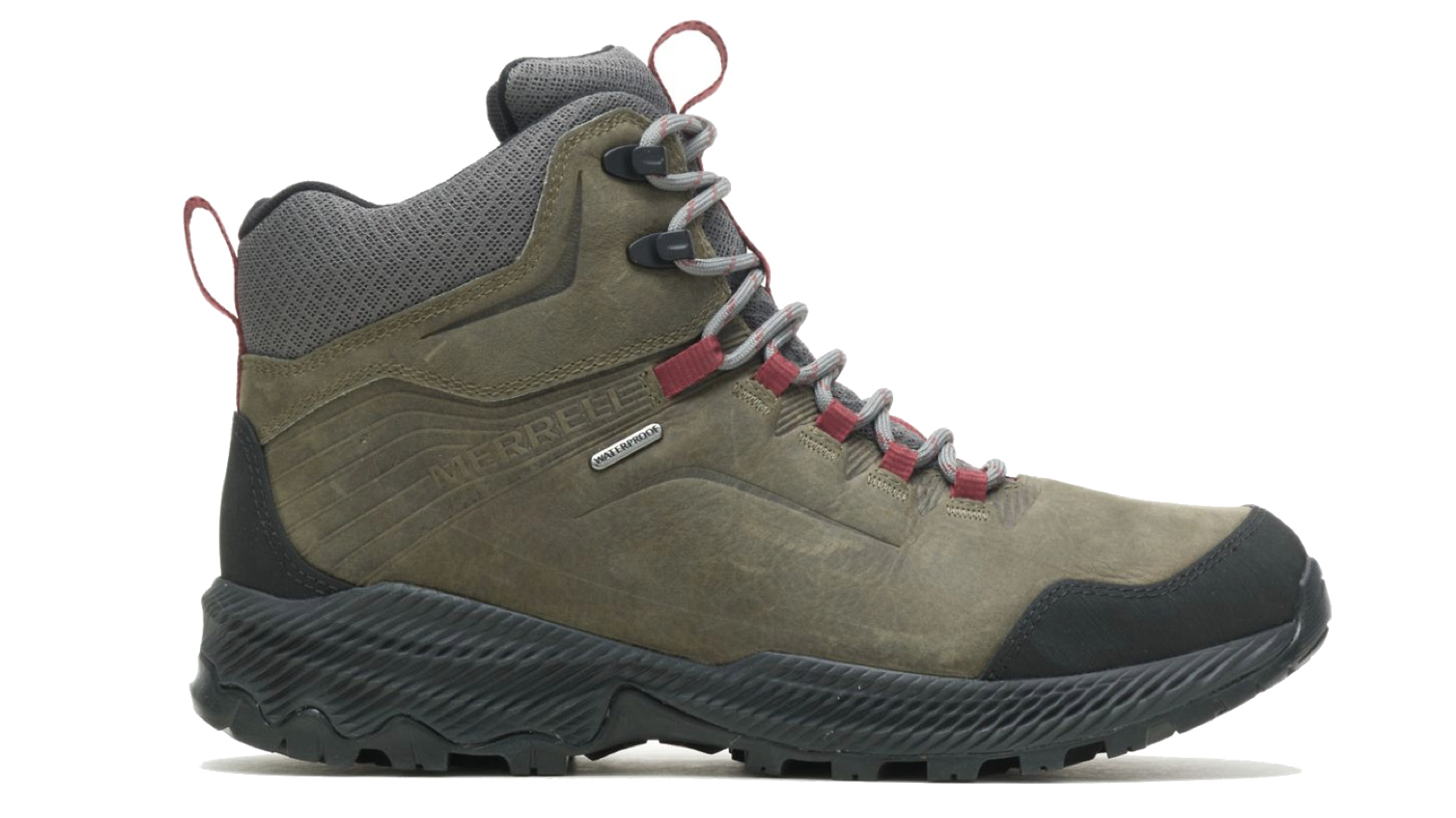
Specifications
Reasons to buy
Reasons to avoid
An all-leather mid-cut hiker, Merrell’s Forestbound Mid hiking boots are designed to prioritize comfort and protection, thanks to their quality leather uppers with a waterproof liner, plus plenty of ankle padding and generous underfoot cushioning. At under 500g in a men’s size nine, they’re lightweight for a leather boot too, which ought to further alleviate foot fatigue during long hikes.
On test, we particularly liked the protective toe cap and heel counter, which prevented the leather from picking up too many scuffs and scrapes, while warding off trail debris. Unsurprisingly given their affordable price tag, they make use of Merrell’s own in-house waterproof membrane and rubber sole compound. The former doesn’t always seem to have the best reputation, and some buyers have commented that their boots have leaked. However, our tester reported that he "didn’t experience any issues on test".
Overall, we reckon this would be a great boot for countryside rambles, long forest walks and the odd hill day. It’s fairly unusual to find a full-grain leather boot at this price point too, particularly one that is so light and comfortable.
Read our full Merrell Forestbound Mid Waterproof hiking boot review
The best budget hiking boots for toe room
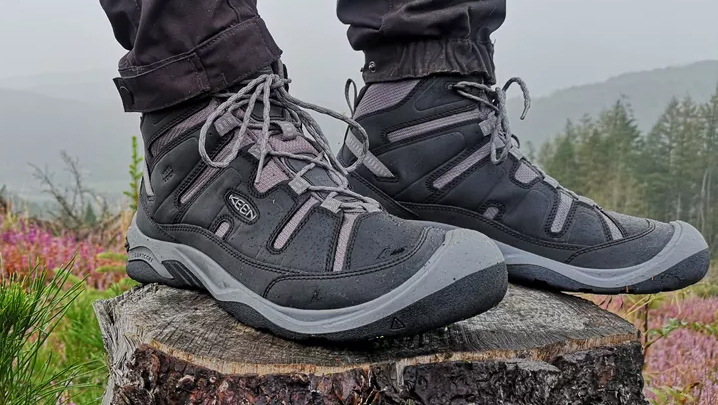
Specifications
Reasons to buy
Reasons to avoid
The KEEN Circadia Waterproof Boot is from a US brand renowned for producing well-priced and practical outdoor footwear, from its perennially popular trail sandals to its wide range of hiking boots. On test, our reviewer found the Circadia to be "flexible and instantly comfortable, just like most trainer-hikers". However, it features a burlier construction that offers a bit more durability and all-round protection out on the trail. They’re fairly big and chunky boots with a broad, high-volume fit that will best suit those with wider feet.
They score high for sustainability too, since the nubuck leather is sourced from a tannery certified by the Leather Working Group. And they’re finished with a water-repellent treatment that is free from harmful PFC chemicals.
All in all, a broad-fitting, beefy-looking day hiker, the Circadia is a classic KEEN boot that offers good protection, cushioning and durability for a mid-cut boot, while still feeling comfortable and flexible. The wide fit means they’re particularly great for hikers with broad feet. We found that the trade-off was that they’re not the most nimble or precise.
Read our full KEEN Circadia Waterproof mid hiking boot review
The best budget hiking boots comparison table
Hiking boot | Price | Weight | Materials | Compatibility |
Haglöfs Skuta Proof Mid | £150 (UK) | 475g / 16.8oz | Leather upper; EVA midsole; waterproof fluorocarbon-free Proof Eco membrane; Asics high-abrasion resistance rubber outsole | 3-season walking on most non-technical trails |
Berghaus Expeditor Ridge 2.0 | £130 (UK) / €145 (EU) | 510g / 18oz | Leather upper with AQ waterproof breathable mesh lining, EVA midsole, OrthoLite footbed, super grip OPTI-STUD outsole | 3-season walking on most non-technical trails |
KEEN Explore Mid Hiking Boot | £71 (UK) | 340g / 12oz | Performance mesh upper with TPU overlays for durability and KEEN.Dry waterproof breathable liner, EVA midsole, KEEN.All-Terrain rubber outsole | Lightweight trainer-hiker that still works well on wet or muddy trails |
Adidas TERREX Eastrail Mid GTX Shoes | £80 (UK) | 390g / 13.8oz | Mesh and synthetic uppers with Gore-Tex lining, EVA midsole, Traxion rubber outsole | A lightweight trail hiker for day walks, fast-paced trails and town to country escapes |
Columbia Trailstorm Mid | $82.50 (US) / £60-80 (UK) | 347g / 12.25oz | Mesh uppers with Omni-Tech waterproof liner, Techlite+ EVA foam rubber midsole, Adapt Trax outsole | A lightweight trail hiker for day walks, fast-paced trails and town to country escapes |
Oboz Sawtooth II Mid Waterproof Hiking Boots | $155 (US) / £155 (UK) | 539g / 19oz | Suede and fabric upper with B-DRY waterproof breathable lining, dual-density EVA midsole with nylon shank, OFIT footbed, Sawtooth moulded outsole | Three-season hiking and backpacking adventures including easier hill and mountain walks |
Merrell Forestbound Mid Waterproof | £120 (UK) | 456g / 16.1oz | Full grain leather upper with M SelectDRY waterproof liner, EVA midsole with nylon arch shank, M SelectGRIP rubber outsole | Three-season walking on most non-technical trails |
KEEN Circadia Waterproof mid hiking boot | $145 (US) / £115 (UK) | 707g / 25oz | Leather upper, KEEN.DRY waterproof & breathable membrane, KEEN LuftCore lightweight foam midsole, rubber outsole | Day walking, hiking and trekking on non-technical trails |
How we test the best budget hiking boots
Our reviewers test budget hiking boots across varied terrain, including technical trails, in a range of conditions, with and without backpacks. We assess the materials used closely. Features (including foot and ankle support, toe and heel protection, cushioning, waterproofing, breathability, materials used, grip and general comfort) are tested against claims made by the brand, and we assess factors such as value for money, durability and environmental impact.
Meet the testers

Based in Wales' stunning Eryri (Snowdonia) National Park, Matt can often be found cavorting around his local hills and mountains. He's a huge fan of long-distance backpacking, having taken on the epic Cambrian Way across the rugged spine of Wales. A seasoned gear expert, he gives every pair of hiking footwear a thorough test.

A seasoned adventurer who has spent 20 years pursuing adventure stories, Pat is one of our main outdoor gear experts. These days, he can often be found exploring the coastal trails of England's south west, while he often journeys to the mountains to get his peak-bagging fix.

A lover of all things outdoors, award-winning travel writer Sian knows a thing or two about what makes a quality hiking shoe. An advocate for accessibility, she knows the value of quality budget footwear and has been rigorously tester outdoor gear for many years.
How to choose the best budget hiking boot
Everyone loves the thought of bagging a bargain, but when it comes to the best budget hiking boots, if you intend to actually use them on trails, you need to know they’re going to walk the walk without failing or falling apart. We get asked time and time again: Can you rely on budget hiking boots? Well, you can, up to a point, and the following features and factors are all well worth considering if you’re shopping around for a new pair of hiking or hillwalking boots on a budget.
It also goes without saying that, where possible, you should always try boots on before buying, since fit is the single most important factor when it comes to footwear (see also: how to choose a pair of hiking boots). If that isn’t possible, for example when buying online, look for a retailer with a fair exchange or returns policy, and wear the boots around the house for a couple of weeks to check the fit before venturing outdoors. If they’re not right, don’t compromise – send them back and keep hunting.
So, here are a range questions we're frequently asked about by those looking to bag themselves a hiking boot bargain.
What is a good price for hiking boots?
A standard pair of hiking boots can cost anything between $60 (£50) and $380 (£300). Factors that influence the overall cost include the quality of leather (or other materials) used; whether or not brands have collaborated with the likes of Gore-Tex for a waterproof membrane and Vibram for the rubber outsole; the size of the production run; and the amount of labor involved in the manufacturing process. For a glimpse of how much goes into a quality pair of the hiking boots, see our feature on how hiking boots are made.
Pricier boots tend to use top-quality leather and come equipped with durable Vibram soles and Gore-Tex membranes. However, many brands have their own technologies, while giants like Adidas, Columbia and Merrell can keep the cost of individual products lower because of the mass produced nature of their footwear.
So, for a budget pair of hiking boots, anything from $125 (£100) to $190 (£150) is about right and should have enough quality to last you for many adventures on the trail. For a premium pair, or a pair of highly protective winter hiking boots, you can expect to pay quite a bit more.
How do I find cheap hiking boots?
Although some of the top brands out there might seem unaffordable, a tight budget needn’t restrict you to the entry-level end of the hiking boot market. The secret to snagging a bargain is to shop savvy.
First up is the golden rule of buying outdoor kit: never pay full price. Ever! Always shop around for the best price. There are hundreds of outdoor boot retailers, from high-street chains and local independent shops to online web shops, so you should always be able to make a saving on the manufacturer’s RRP.
Secondly, look out for discount codes and vouchers, which often give 10% (or more) off full-priced items. Often, something as simple as signing up to a mailing list will give you a voucher code. You can also get a discount (normally 10-20%) at many shops if you’re a member of an organisation or group such as the National Trust, Ramblers, the BMC, Armed Forces or NHS. In addition, many outdoor retailers will price-match an item. You just need to prove that you can buy it cheaper elsewhere.
It’s also worth taking advantage of sales, since just like high-street clothing brands, outdoor manufacturers produce new ranges from season to season. Products are usually released in spring/summer or autumn/winter collections. Time it right and you can make big savings on outdoor kit, when end-of-season products make way for new ranges. Sometimes, the only changes to products will be new colorways. Look out for boot bargains in the January sales, mid-season sales in March, summer sales in August/September and the ‘Black Friday’ weekend in November.
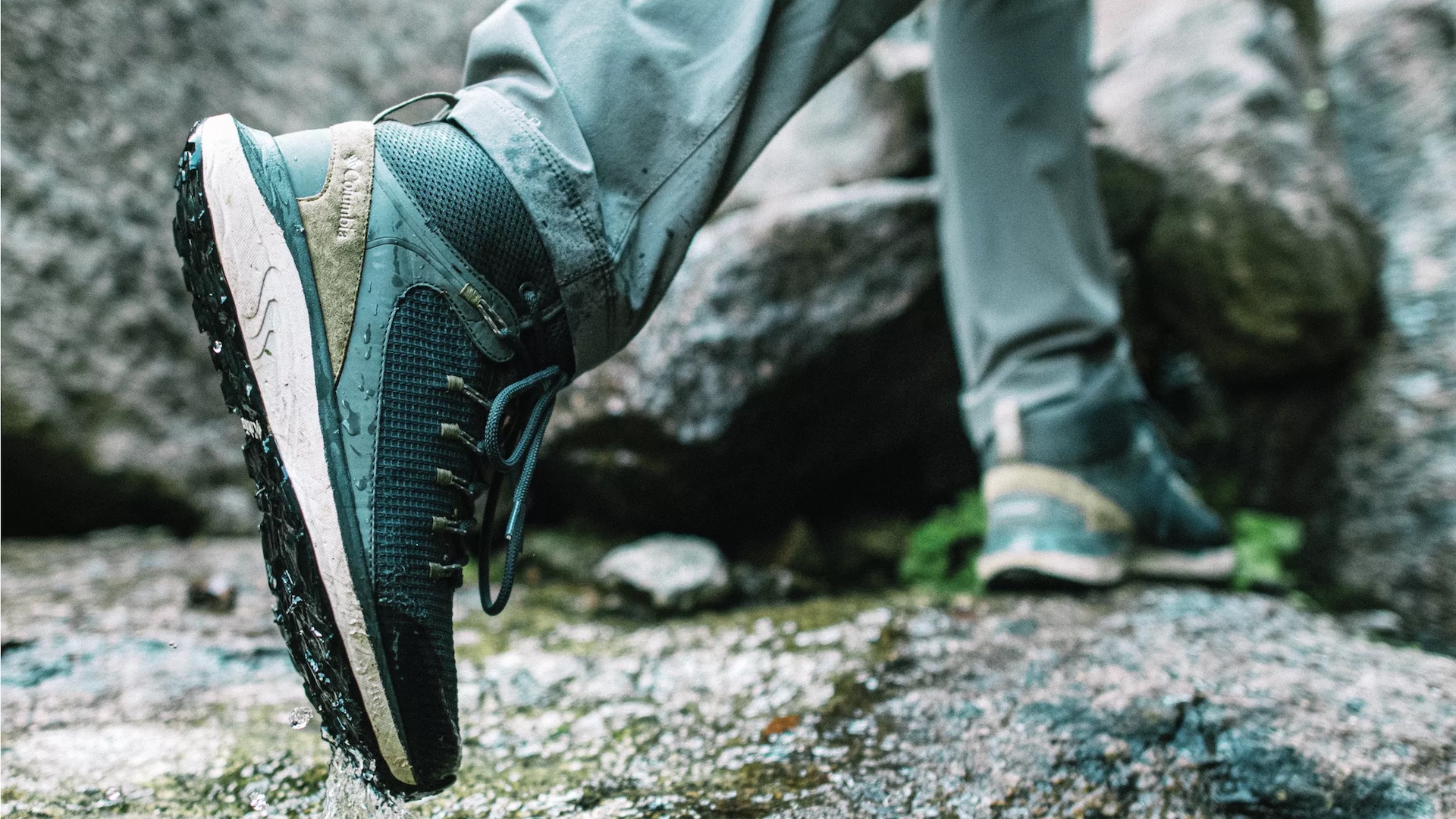
How should hiking boots fit?
We said this up top, but it’s worth repeating again: make sure that your boots fit well. This is the single most important consideration when shopping for outdoor footwear. If you can, try before you buy, and if you’re visiting an outdoor shop, take a pair of hiking socks along with you.
A good retailer should be able to offer fitting advice and will usually encourage you to try on multiple pairs from different brands to find a pair that suits you. This is important, since boots are built on specific lasts (essentially, an artificial model of a foot), each of which will suit a different foot shape. However, general fitting advice for hiking boots is to ensure there is room in the toe box for your toes to flex and splay. Your toes shouldn’t hit the end of the boot when you walk, as this can cause bruising and blisters.
The midfoot should cradle and support the foot, without feeling too tight or constrictive. Equally however, there shouldn’t be too much space or volume inside the boots, as this can cause the boot to roll around the foot, reducing stability on uneven ground. Remember that the addition of a specialist insole can sometimes transform the fit of a boot, especially if you have particularly narrow or low-volume feet (see also: Hiking insoles: what they are and why you need them). Lastly, the heel of the boot should cup the foot without pinching. There should be minimal heel slippage when you walk.
One additional note: remember to lace your new boots up properly to get a sense of the ankle support they offer. A high boot provides maximum support and stability, ideal for technical terrain or backpacking, while a ‘mid’ boot balances ankle support and protection with freedom of movement.
Is it better to have tighter or looser hiking boots?
Everyone has their Goldilocks level of tightness, not too tight as to be uncomfortable and not too loose that your toes end up ramming into the front of the boot during long descents. As well as this, no two feet are the same shape, which is why no two boots are the same either. For example, KEEN are known for their accommodating fit and decent levels of toe wiggle room.
The key is trying a boot on to check it suits your foot and making sure that, while it's not uncomfortably tight, your foot is locked in enough that it won't slip around once you hit the technical stuff.
Are stiffer boots better for hiking?
This really depends on the kind of terrain you intend to tackle. The most technical terrain you can tackle in hiking boots is mixed snow, ice and rock during winter. Due to this, winter boots feature outsoles that are so stiff that you can't bend them. The stiffer the hiking boot, the greater comfort and stability they'll give you on technical terrain – plus they'll likely be more durable and protective too.
However, wander around at your local park or on easy trails in stiff-soled winter boots and you'll soon be uncomfortable, so there's definitely a balance to be struck.
Nevertheless, for hiking on backcountry and mountain trails, stiffer boots are generally better for the support, stability and comfort they provide.
What should I look for in a hiking boot's upper?
Most budget or entry-level hiking boots tend to be made from fabric or synthetic materials, since these are generally cheaper than using nubuck, suede or full-grain leather. The bonus of this is that fabric boots usually offer better out-of-the-box comfort than leather boots, with no breaking-in period required. They also tend to be lighter and require less care and maintenance.
If you’re buying boots for wet weather walking, it’s a good idea to look for a pair that feature some sort of breathable waterproof fabric. If you’re lucky, you might find a low-priced Gore-Tex boot, but most entry-level models use cheaper own-brand membranes or technology. These shouldn’t be discounted, as they can still do a great job of providing functional waterproof performance.
For added durability, look for a boot with reinforced panels in high-wear areas. Some more technical boots have a protective toe cap or even a wraparound rand at the lower wear edge of the uppers, designed to protect from scuffs and scrapes on rocky scrambles and scree slopes.
What should I look for in a hiking boot's midsole?
Technical hiking boots are constructed with a nylon, carbon fibre or metal shank embedded in a foam rubber midsole, made from either PU (polyurethane) or EVA (ethylene vinyl acetate). This element is sandwiched between the outsole and the footbed, to which the uppers are stitched. It provides stiffness as well as cushioning and is the ‘heart’ of the boot. Entry-level boots usually prioritize cushioning, since they aren’t intended for highly technical terrain, and therefore don’t require such a stiff platform. This means you’ll usually get a short nylon shank or insert embedded in EVA foam – a combination that is known for providing trainer-like comfort.
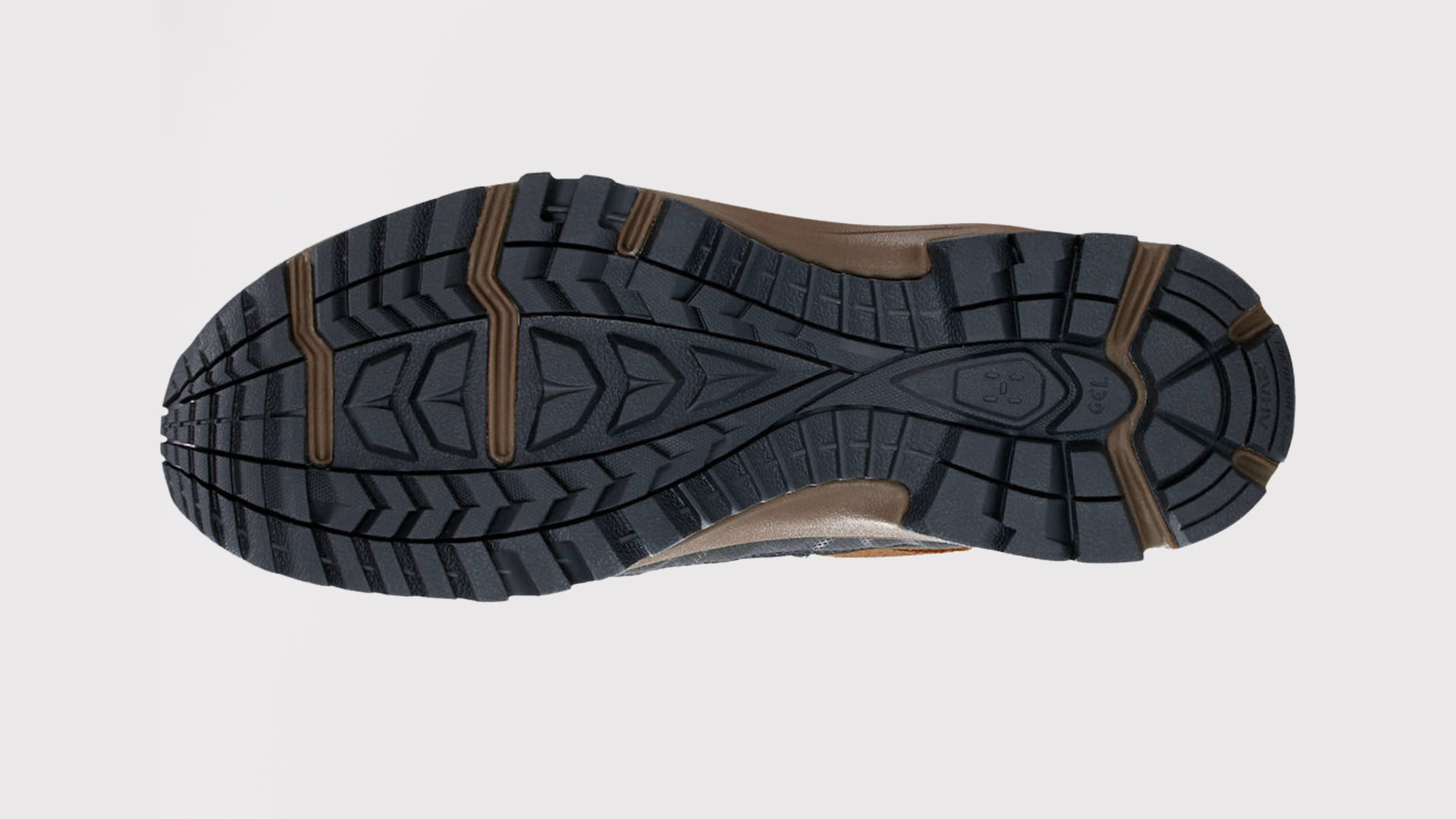
What should I look for in a hiking boot's outsole?
Improved grip and traction underfoot are among the main reasons that hikers often opt for boots over trainers, particularly on wet, muddy trails or slippery, rocky paths. For maximum traction in varied conditions, look for a boot with deep, widely spaced lugs (the tread pattern on the underside of the boot). Most hiking boots will have a lug depth of at least 4mm. An undercut heel breast or heel brake (just like the heel section on a formal shoe or work boot) is also a useful feature that helps downhill control and braking on steeper ground.
When it comes to outsoles, premium boots usually employ a proprietary technology such as Vibram, while the best budget hiking boots tend to use own-brand rubber compounds and tread patterns. Softer compounds tend to provide more grip, but harder compounds typically wear better.
What's the difference between men's and women's hiking boots
Men's feet tend to be larger, wider and shaped differently to women's feet, so it's no surprise that there are hiking boots for men and hiking boots for women. Shape wise, women's feet are generally narrower at the heel and wider in the forefoot, plus they're also more flexible, which calls for different kinds of support.
Due to this, many women's hiking boots have a stiffer midsole than the male counterparts, as well as greater arch support. In the outsole, you can expect deeper, more aggressive lugs. This is because women are generally lighter than men and, therefore, don't plant their feet with as much weight, meaning enhanced grip is required for technical terrain.
What are the best hiking socks?
A quality pair of boots is only as good as the hiking socks you pair with them, so it's important to choose wisely here too. Most of the finest hiking socks are woven from a mixture of moisture wicking, fast-drying materials like polyester blended with merino wool. For winter, a high warmth to weight ratio is also important. As well as this, the best hiking socks feature a much higher stitch count than the norm and are often designed to be seamless to prevent chafing and blisters.
What to do with your old hiking boots
Depending on how they're made, you may be able to extend the life of your old hiking boots by having them resoled (see our guide should I resole hiking boots to get started).
If your boots still have some life left in them, you may be able to donate them to a local charity or thrift store, or a local gear exchange so someone else can try hiking without the expense of a brand new pair. If they're worn out, many household recycling centers will accept old footwear (contact your nearest one or check your local authority's website for details).
If you have a lot of footwear, or you can organize a drive with friends or colleagues, you can order a footwear zero waste box from Terracycle, which will include a shipping label so you can return it. It's not a cheap option, but if enough people chip in towards the cost, it's a good way to get shoes and boots sent to a specialist processing plant.
In the UK, Cotswold Outdoor accepts paired shoes and boots (except for ski boots) in its in-store recycling bins.
- Best hiking shoes: lighter footwear for those who don't want a full boot
All the latest inspiration, tips and guides to help you plan your next Advnture!
An outdoors writer and editor, Matt Jones has been testing kit in the field for nearly a decade. Having worked for both the Ramblers and the Scouts, he knows one or two things about walking and camping, and loves all things adventure, particularly long-distance backpacking, wild camping and climbing mountains – especially in Wales. He’s based in Snowdonia and last year thru-hiked the Cambrian Way, which runs for 298 miles from Cardiff to Conwy, with a total ascent of 73,700 feet – that’s nearly 2½ times the height of Everest. Follow Matt on Instagram and Twitter.
- Sian Lewis
- Pat KinsellaAdvnture Consulting Editor
- Alex Foxfield

